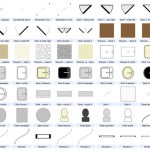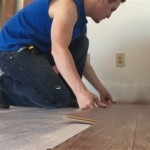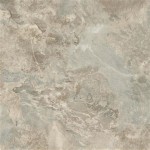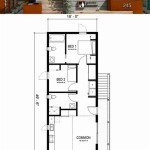Cost Of Wood Floors For 2000 Square Feet
Determining the cost of installing wood floors in a 2000 square foot space requires considering several variables. The type of wood, the installation method, subfloor preparation needs, and regional labor rates all contribute to the final expense. Understanding these factors allows for a more accurate budget estimation and informed decision-making process.
The initial step involves selecting the type of wood flooring. Options range from solid hardwood to engineered wood, each with distinct characteristics and price points. Solid hardwood is crafted from a single piece of wood and is generally more expensive than engineered wood. Engineered wood, on the other hand, consists of multiple layers of wood veneer bonded together, offering greater stability and often a lower price tag. Within each category, different species of wood, such as oak, maple, hickory, or exotic varieties, further influence the material cost.
Installation methods also play a significant role in the overall cost. Common techniques include nail-down, glue-down, and floating installations. Nail-down installations, typically used for solid hardwood, involve securing the planks directly to a wooden subfloor. Glue-down installations, suitable for both solid and engineered wood, utilize adhesive to bond the flooring to the subfloor. Floating installations, commonly used with engineered wood, involve connecting the planks to each other without directly attaching them to the subfloor. Each method has its own labor requirements and associated costs.
Subfloor preparation is often an overlooked aspect that can significantly impact the final cost. If the existing subfloor is uneven, damaged, or unsuitable for the chosen flooring, it will need to be repaired or replaced. This can involve leveling the subfloor, patching cracks or holes, or installing a new subfloor altogether. Proper subfloor preparation is crucial for ensuring the longevity and stability of the new wood flooring.
Finally, regional labor rates for flooring installers can vary considerably. Urban areas with a higher cost of living tend to have higher labor rates than more rural areas. Obtaining multiple quotes from qualified flooring contractors is essential for comparing prices and finding the best value for the installation services.
Material Costs: Solid Hardwood vs. Engineered Wood
The primary driver of cost in wood flooring projects is the material itself. Solid hardwood, being a premium product made from a single piece of timber, generally commands a higher price per square foot compared to engineered wood. The species of wood also significantly influences the cost. Common domestic hardwoods like oak and maple are typically more affordable than exotic imported species. The grade of the wood, referring to its appearance and the presence of knots or imperfections, also affects the price, with higher grades being more expensive.
Engineered wood, constructed from multiple layers, offers a more cost-effective alternative. While the top layer still consists of real wood, the underlying layers are made from less expensive materials like plywood or fiberboard. This construction allows for a lower price point without sacrificing the aesthetic appeal of real wood. Engineered wood also tends to be more resistant to moisture and temperature fluctuations, making it a suitable option for areas where solid hardwood may not be ideal.
For a 2000 square foot space, the material cost for solid hardwood could range from $8 to $15 per square foot, depending on the species and grade. This translates to a total material cost of $16,000 to $30,000. In contrast, engineered wood flooring might range from $4 to $10 per square foot, resulting in a material cost of $8,000 to $20,000 for the same area. These figures are approximate and can vary based on specific product selections and supplier pricing.
Beyond the per-square-foot cost, additional materials like underlayment, trim, and baseboards also need to be factored into the overall budget. Underlayment, which provides cushioning and sound insulation, can add $0.50 to $2 per square foot. Trim and baseboards, used to finish the edges of the flooring, can add several hundred to a few thousand dollars to the total project cost, depending on the style and material chosen.
Installation Costs: Methods and Labor Rates
The installation method significantly impacts the labor cost associated with wood flooring projects. Nail-down installations, commonly used for solid hardwood, require skilled installers who can properly secure the planks to the subfloor using specialized nailing equipment. This method is generally more labor-intensive than other options and may result in higher installation costs.
Glue-down installations, suitable for both solid and engineered wood, involve applying adhesive to the subfloor and carefully positioning each plank. This method requires meticulous attention to detail to ensure proper adhesion and prevent gaps or unevenness. The labor cost for glue-down installations can vary depending on the type of adhesive used and the complexity of the installation.
Floating installations, primarily used with engineered wood, are often considered the easiest and most cost-effective method. The planks are designed to interlock or click together, creating a floating floor that is not directly attached to the subfloor. This method requires less specialized equipment and can often be completed more quickly, resulting in lower labor costs.
Labor rates for flooring installers vary considerably depending on geographic location and the experience of the contractor. In urban areas with a high cost of living, labor rates may range from $4 to $8 per square foot. In more rural areas, labor rates may be lower, ranging from $2 to $5 per square foot. For a 2000 square foot space, the total labor cost could range from $4,000 to $16,000, depending on the installation method and regional labor rates.
It is crucial to obtain multiple quotes from qualified flooring contractors to compare prices and ensure that the proposed work aligns with the budget. When comparing quotes, it is essential to consider the scope of work included, such as subfloor preparation, removal of existing flooring, and disposal of waste materials. A detailed written contract that outlines the project specifications, timeline, and payment schedule is essential for protecting both the homeowner and the contractor.
Subfloor Preparation: Necessary Repairs and Leveling
Subfloor preparation is a critical step in any wood flooring installation project. The existing subfloor must be clean, dry, level, and structurally sound to ensure the longevity and stability of the new flooring. Failure to properly prepare the subfloor can lead to issues such as squeaking, unevenness, and premature wear and tear.
The first step in subfloor preparation is to inspect the existing subfloor for any signs of damage, such as cracks, holes, or water stains. Any necessary repairs should be completed before proceeding with the installation. This may involve patching cracks with a concrete patching compound, filling holes with wood filler, or replacing damaged sections of the subfloor.
Leveling the subfloor is essential for creating a smooth and even surface for the new flooring. Unevenness in the subfloor can cause the flooring to flex or bend, leading to premature wear and tear. There are several methods for leveling a subfloor, including using self-leveling compound, grinding down high spots, or installing shims under the flooring.
The cost of subfloor preparation can vary depending on the extent of the necessary repairs and leveling. Simple repairs, such as patching cracks or filling holes, may cost a few hundred dollars. More extensive repairs, such as replacing damaged sections of the subfloor or leveling a significantly uneven subfloor, can cost several thousand dollars. It is essential to factor in the cost of subfloor preparation when budgeting for a wood flooring project.
In some cases, it may be necessary to install a new subfloor altogether. This may be required if the existing subfloor is severely damaged or unsuitable for the chosen flooring. The cost of installing a new subfloor can range from $2 to $5 per square foot, depending on the type of subfloor material used and the labor rates in the area. For a 2000 square foot space, the cost of installing a new subfloor could range from $4,000 to $10,000.
Ultimately, the total cost of wood floors for a 2000 square foot space is a multifaceted calculation. It depends on the selection of materials, the complexity of the installation, and the necessary subfloor preparation. Careful consideration of these factors, along with obtaining multiple quotes from reputable contractors, will enable a well-informed decision and a successful flooring project.

How Much Does Hardwood Flooring Cost 2025 Guide

How Much Does Hardwood Flooring Cost 2025 Guide

How Much Does Hardwood Flooring Cost 2025 Guide

Cost Of Installing Hardwood Floors Top 2024 Price Guide

Floor Replacement Cost To Refloor A House Fixr

How Much Does Hardwood Flooring Installation Cost 2025 Data Angi

What Is The Cost To Install Flooring 2025 Calculator

How Much Does Engineered Hardwood Flooring Cost 2025 Today S Homeowner

Cost To Install Hardwood Floors The Home

How Much Does It Cost To Install Herringbone Wood Floors Lv Flooring Toronto







